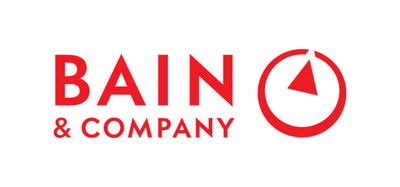
- Even with AI-related savings, investors are still $800 billion short in annual revenue required to profitably fund the data centers of 2030
- Agentic AI innovation is unprecedented, but most companies remain in experimentation mode before taking their “hands off the wheel”
- Quantum computing could unlock as much as $250 billion in market value across industries
SAN FRANCISCO, Sept. 23, 2025 /PRNewswire/ — Two trillion dollars in annual revenue is what’s needed to fund computing power needed to meet anticipated AI demand by 2030. However, even with AI-related savings, the world is still $800 billion short to keep pace with demand, new research by Bain & Company finds.
Bain’s sixth annual Global Technology Report released today shows, by 2030, global incremental AI compute requirements could reach 200 gigawatts, with the US accounting for half of the power. Even if companies in the US shifted all of their on-premise IT budgets to cloud and reinvested the savings from applying AI in sales, marketing, customer support, and R&D into capital spending on new data centers, the amount would still fall short of the revenue needed to fund the full investment, as AI’s compute demand grows at more than twice the rate of Moore’s Law, Bain notes.
“If the current scaling laws hold, AI will increasingly strain supply chains globally,” said David Crawford, chairman of Bain’s Global Technology Practice. “By 2030, technology executives will be faced with the challenge of deploying about $500 billion in capital expenditures and finding about $2 trillion in new revenue to profitably meet demand. Meanwhile, because AI compute demand is outpacing semiconductor efficiency, the trends call for dramatic increases in power supply on grids that have not added capacity for decades. Add the arms race dynamic between nations and leading providers, and the potential for overbuild and underbuild has never been more challenging to navigate. Working through the potential for innovation, infrastructure, supply shortages, and algorithmic gains is critical to navigate the next few years.”
Agentic AI develops at breakneck speed; could offer another round of gains
While computational demand increases, leading companies have moved from piloting AI capabilities to profiting from AI as organizations scale the technology across core workflows delivering 10% to 25% earnings before interest, taxes, depreciation, and amortization (EBITDA) gains over the last two years. Yet most companies today remain stuck in AI experimentation mode and are satisfied with modest productivity gains, the report concludes.
Tech-forward enterprises are pursuing agentic AI capabilities which is making for an unprecedented rate of innovation, the report finds. Over the next three to five years, 5% to 10% of technology spending could be directed toward building foundational AI capabilities including agent platforms, communication protocols, real-time data access and discoverability for agents. As much as half of overall technology spending by companies could be used on AI agents running across the enterprise, Bain estimates.
As AI evolves, the report shows leaders will pull further ahead of laggards in four levels of maturity including (1) large language model (LLM)-powered information retrieval agents, (2) single-task agentic workflows, (3) cross-system agentic workflow orchestration, and (4) multi-agent constellations. Levels 2 and 3 are where capital, innovation, and deployment velocity are converging. With AI innovation moving at breakneck speed, leaders are compounding their advantage while followers are getting further behind.
Meanwhile, enterprise IT architectures are struggling to realize the vision of contextually-informed secure agents freely collaborating across multiple applications and databases to automate the diverse tasks accomplished by humans. Bain finds that a north star architecture is critical, but profit motives and security demands will lead to uneven progress toward the four levels of agentic maturity over years.
AI is disrupting SaaS, but whether it disrupts a SaaS provider is up to them
SaaS providers are facing disruption from the rise of generative and agentic AI, but this does not mean obsolescence. In many cases this can be total addressable market (TAM)-additive for SaaS providers. Companies should evaluate two independent characteristics as they plan to benefit from AI in their industry: the potential for AI to (1) automate SaaS user tasks and (2) penetrate SaaS workflows. SaaS incumbents are well-positioned to lead, but this will require high-stakes strategic bets—such as selective open-sourcing or a shift in the monetization model—and will yield a unique, durable industry influence position. To stay ahead, providers must own the data, lead on standards, and price for outcomes, not log-ons, in an AI-first world.
New norm for business leaders as sovereign AI creates a fragmented world
Tariffs, export controls, and the push by governments worldwide for sovereign AI are accelerating the fragmentation of global technology supply chains, Bain finds. Cutting-edge domains such as AI are no longer just catalysts for economic growth but are conduits for countries’ political power and national security. As semiconductor supply chains fragment, the US and China remain at the forefront of the decoupling movement, with China accounting for roughly 20% of global chip manufacturing capacity just this year, the report shows.
“Sovereign AI capabilities are increasingly seen as a strategic advantage on par with economic and military strength,” said Anne Hoecker, head of Bain’s Global Technology practice. “While sovereign AI is a global priority, individual countries’ goals vary. Therefore, for most countries, achieving full-stack independence is not feasible, at least not today. Considering these differences, global AI standards are unlikely to converge.
“To succeed, multinational firms will need to localize not just compliance, but also their technology architecture. Businesses need to make decisions with optionality, moving boldly where confidence is high and prioritizing flexibility where uncertainty rules.”
Companies eye quantum computing advancements, rise of humanoid robots
Alongside rapid acceleration of AI initiatives are two separate technological phenomena: the advancement of quantum computing, and the rise of humanoid robots.
Quantum computing has the potential to unlock as much as $250 billion in market value across industries such as pharmaceuticals, finance, logistics, and materials science, posing opportunities that will be gradual— though not guaranteed, Bain estimates. While the potential posed by quantum computing is immense, to reach full market potential, a fully capable and fault-tolerant computer will be needed at scale and is still years away, the report concludes.
In parallel, interest in humanoid robots has increased from viral videos to billion-dollar valuations. As humanoid robots become more prevalent, commercial success will hinge on ecosystem readiness, and companies that pilot them early will be best positioned to become the leaders during a new era of growth. While robots draw both headlines and capital, most deployments remain early-stage with heavy reliance on human supervision, Bain finds.
Technology private equity deals slow in second half of 2025, though temperament remains upbeat
Gone are the days of easy technology private equity (PE) deals as deal momentum fueled by software sales slows. According to Bain’s 2025 analysis of PE technology deals in North America, deal-making has not been immune to tariff-related uncertainties and geopolitical tensions despite an increase in tech deals in the first half of this year. While software spending continues to outpace overall GDP growth, software’s penetration is topping out across major sectors, such as manufacturing and retail, posing new challenges for tech investors who will need to work harder to find new sources of top-tier growth. Despite deal process slowdowns, investors remain upbeat as Technology has outperformed most other sectors in terms of dealmaking, Bain’s analysis shows.
Media contacts
To arrange an interview or for any questions, please contact:
Dan Pinkney (Boston) — Email: [email protected]
Amanda Folsom (Boston) — Email: [email protected]
Gary Duncan (London) — Email: [email protected]
Ann Lee (Singapore) — Email: [email protected]
About Bain & Company
Bain & Company is a global consultancy that helps the world’s most ambitious change makers define the future.
Across 65 cities in 40 countries, we work alongside our clients as one team with a shared ambition to achieve extraordinary results, outperform the competition, and redefine industries. We complement our tailored, integrated expertise with a vibrant ecosystem of digital innovators to deliver better, faster, and more enduring outcomes. Our 10-year commitment to invest more than $1 billion in pro bono services brings our talent, expertise, and insight to organizations tackling today’s urgent challenges in education, racial equity, social justice, economic development, and the environment. We earned a platinum rating from EcoVadis, the leading platform for environmental, social, and ethical performance ratings for global supply chains, putting us in the top 1% of all companies. Since our founding in 1973, we have measured our success by the success of our clients, and we proudly maintain the highest level of client advocacy in the industry.
View original content to download multimedia:https://www.prnewswire.com/news-releases/2-trillion-in-new-revenue-needed-to-fund-ais-scaling-trend—bain–companys-6th-annual-global-technology-report-302563362.html
SOURCE Bain & Company




